Last week’s round-up;
31 August – 04 September 2020

FDA issues nitrosamine detection and prevention guidance
The US FDA has implemented new nitrosamine guidance with immediate effect. The document details the necessary steps that should be taken to detect and prevent the introduction of potentially carcinogenic nitrosamine impurities into finished drug products and active pharmaceutical ingredients (APIs). The guidance describes circumstances that can lead to the introduction of nitrosamine impurities in medicines and APIs. This includes the potential roles of tertiary and quaternary amines used as reagents during the manufacturing process and which may be a potential source of nitrosamines, as well as amide solvents that can be a source of secondary amines. The guidance also covers circumstances in vendor-sourced materials where recovered solvents, catalysts and reagents may be a source of nitrosamine contamination. Risk assessment processes are also laid out in the guideline.
Further information on the new FDA guidelines may be viewed at the following link: http://bit.ly/RealCMC-3bpTOvz
Public Consultation on the CEP of the future
The EDQM has launched a project to design the Certificate of Suitability (CEP) of the future. The content and layout of the current CEP have not changed significantly since the original CEP was created in 1992. The aim of the project is “to develop a “new-look” CEP that will better fit the emerging needs of stakeholders and offer both enhanced user-friendliness and greater transparency of the information conveyed without, however, increasing the administrative regulatory burden related to their revision”. Therefore, the EDQM is requesting general feedback on the content, layout, format and use of the CEP from stakeholders in the pharmaceutical industry and from National Competent Authorities around the world. Stakeholders may submit their comments in the form of an online survey until 31st December 2020. A “read only” version of the survey is also available in order to allow users to prepare their answers in advance: https://bit.ly/RealCMC-3jFpaBi
MHRA publishes New Rules to apply from January 2021
MHRA has published Guidance for industry and organisations to follow from 1 January 2021 following the transition period when UK fully exits the EU. The guidance covers the requirements for Clinical Trials, Devices, Licensing, Importing and Exporting, IT systems, Pharmacovigilance and Paediatrics.
The link to the guidance can be found here: https://lnkd.in/e7mstgx
New FDA product-specific guidance
The US FDA has published 19 new and 17 revised product-specific guidances, which clarify the agency’s expectations for demonstrating equivalence between generic and reference drugs, in an effort to promote generic competition. The new draft product-specific guidances include recommendations for generic versions of the breast cancer drug alpelisib, generic esketamine which is a nasal spray for treating major depression and larotrectinib, which is used to treat solid tumors with neurotrophic receptor tyrosine kinase gene fusions. The following product-specific guidance documents were revised: generics of the blood clot drug rivaroxaban and several HIV treatments, including dolutegravir, and the combination products abacavir/dolutegravir/lamivudine and dolutegravir/rilpivirine: https://bit.ly/RealCMC-2EKeLFD
ENPR-EMA: Preparedness of medicines’ clinical trials in paediatrics
Enpr-EMA issues recommendations on preparedness, for sponsors, principal investigators and triallists involved in paediatric clinical trials. They have defined ‘Preparedhttp://bit.ly/RRL-2DziLrQness’ as the structured assessment of contributing factors that enable the smooth conduct of CTs in a timely manner. The recommendations cover data and information collection, contributor involvement (such as CT sites, expert groups , patients and families, and regulators), following a structured approach, and approaches for preparing plans and studies.
A link to the full document can be found here: https://lnkd.in/fSahvZK
EMA Consultation issued: QT/QTc Q&A
EMA has issued a consultation on the ICH Guideline E14/S7B Implementation working group document: Clinical and Nonclinical Evaluation of QT/QTc Interval Prolongation and Proarrhythmic Potential Questions and Answers. The document comprises proposed revisions to sections 5.1 and 6.1 of the current Q&As for ICH E14. Other sections are not proposed for revision. At Step 4, the revised sections 5.1 and 6.1 will be integrated with the other current Q&As for ICH E14. The consultation also includes new Q&As for ICH S7B.
A link to the consultation can be found here: http://bit.ly/RRL-2DziLrQ
FDA addresses nitrosamines in TB drugs
Following the discovery of elevated levels of nitrosamine impurities in two tuberculosis drugs, rifampin and rifapentine, the FDA has clarified how it will address the presence of these potentially carcinogenic impurities. Elevated levels of the nitrosamine 1-methyl-4-nitrosopiperazine (MNP) were found in rifampin and high levels of 1-cyclopentyl-4-nitrosopiperazine (CPNP) were found in rifapentine. The Agency has taken a risk-benefit approach to the issue and has said that “to mitigate or avoid shortages and to help ensure patients have access to these necessary medicines, FDA will not object to certain manufacturers temporarily distributing” rifampin and rifapentine containing nitrosamines above the acceptable intake limits “until they can reduce or eliminate the impurities”. Manufacturers should however ensure that levels of the MNP and CPNP in these antibiotics are below 5 ppm and 14 ppm respectively. In cases where nitrosamine levels are found to be above these limits, the manufacturer is required to contact the Center for Drug Evaluation and Research’s Drug Shortage Staff who will determine whether the products should be released for distribution. http://bit.ly/RealCMC-31FOLUA

